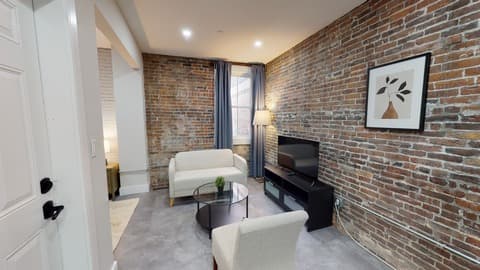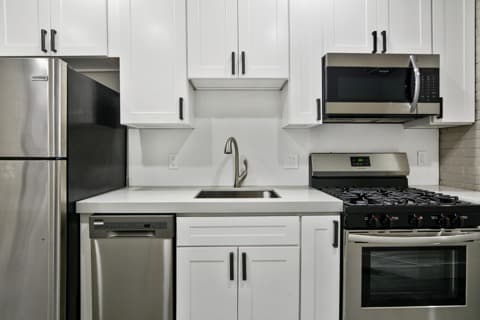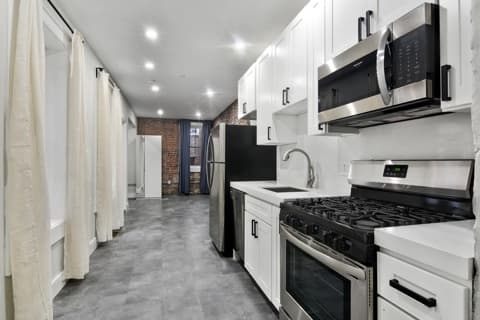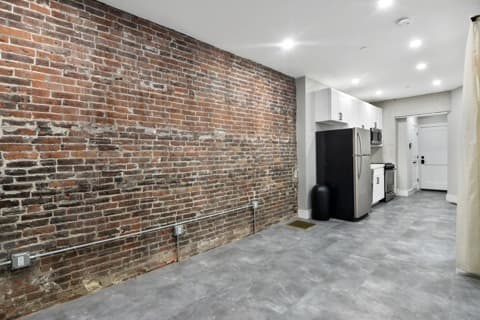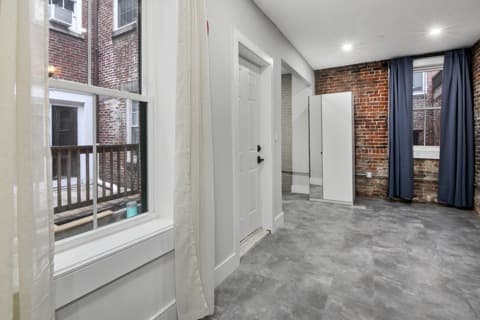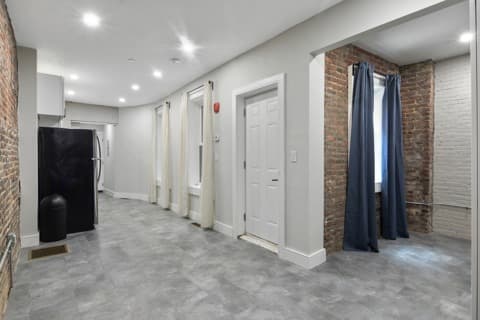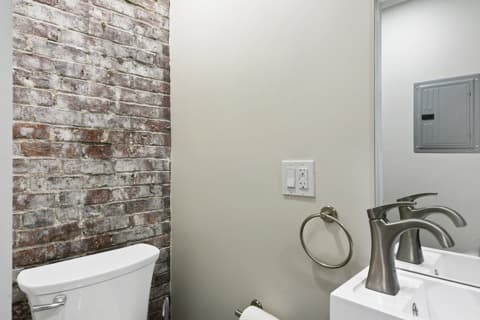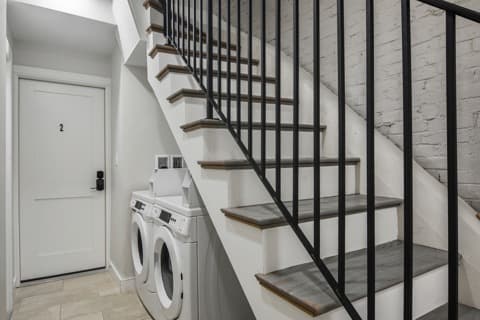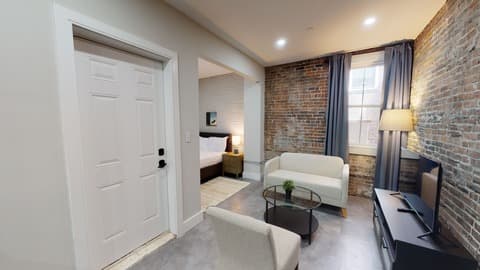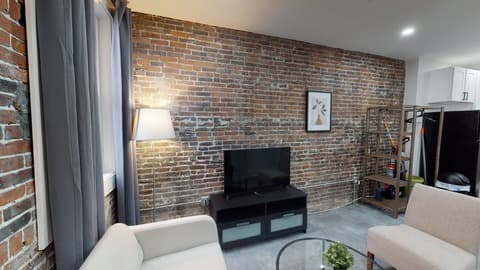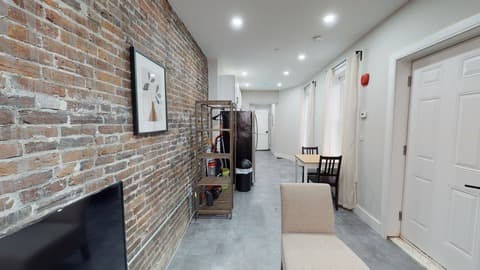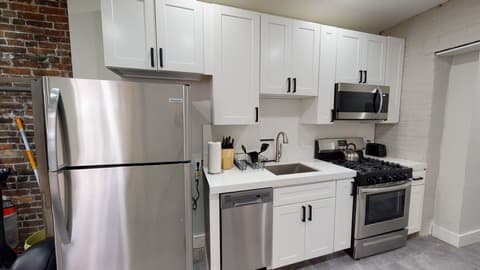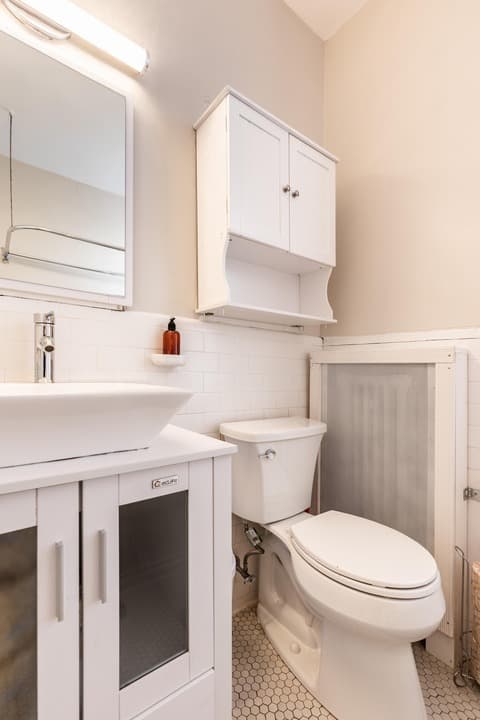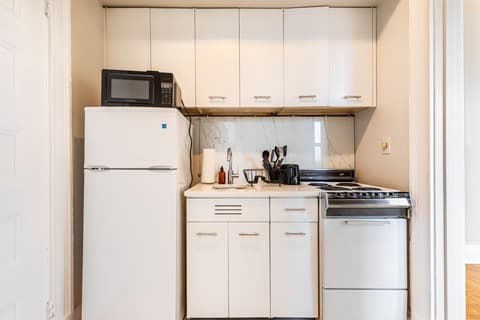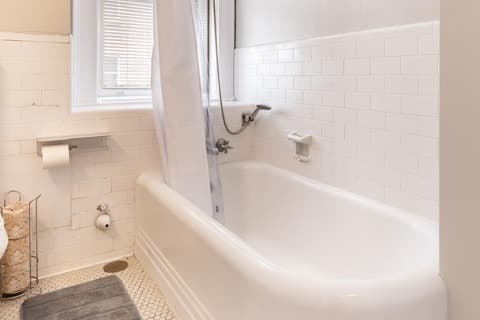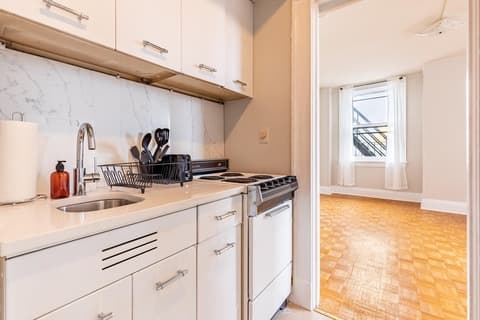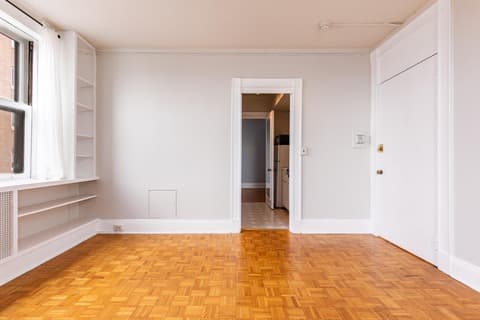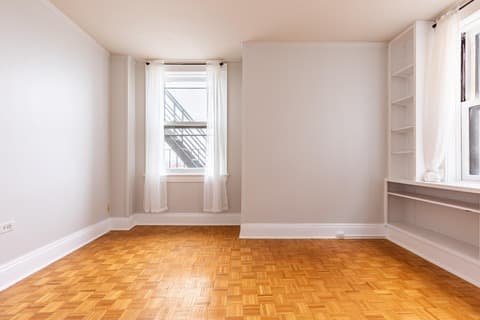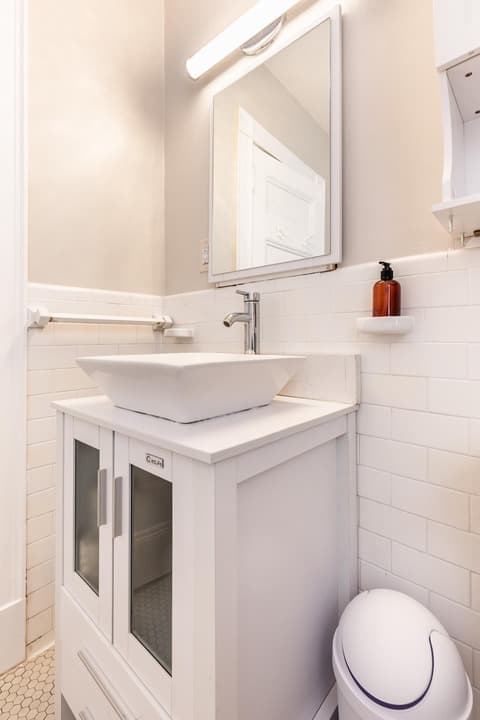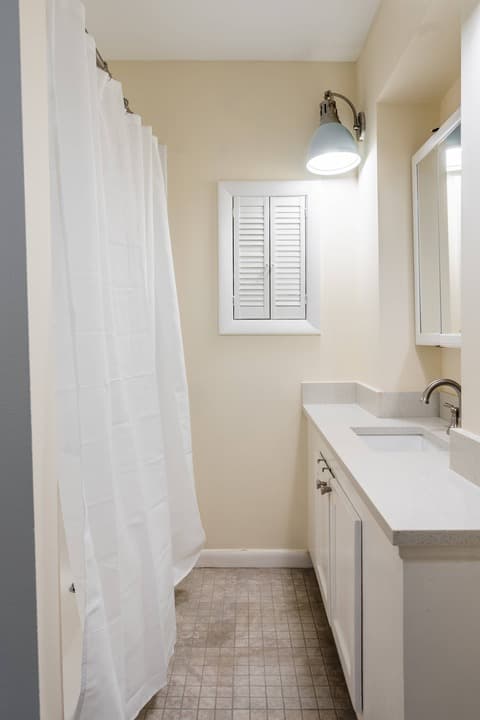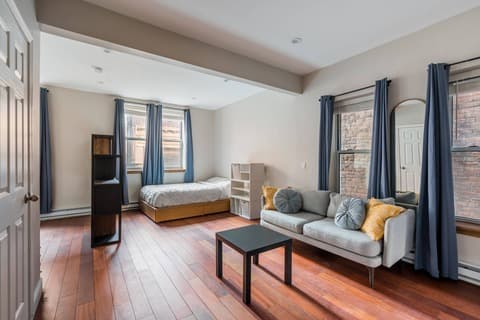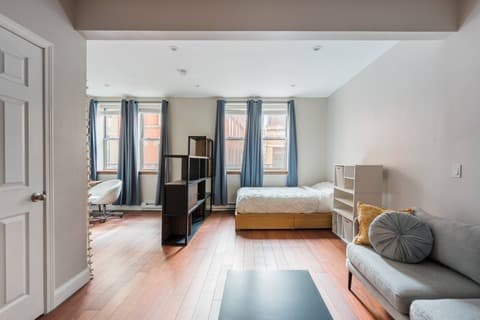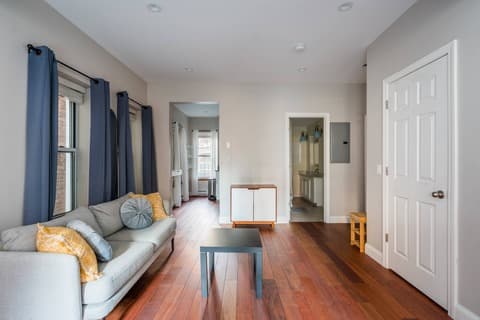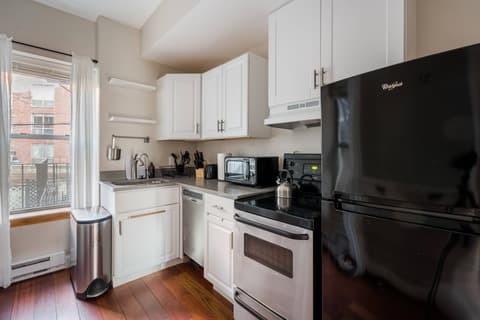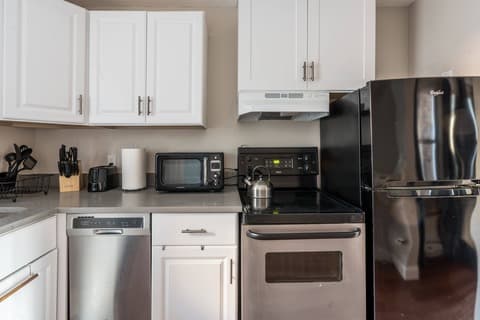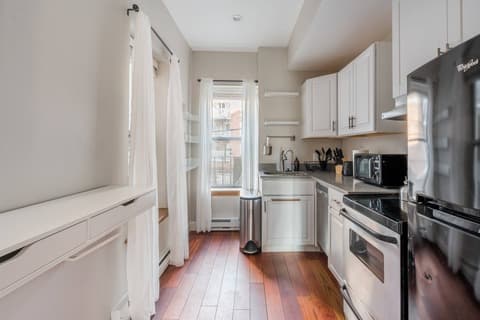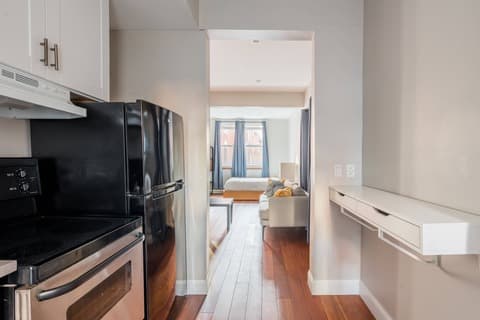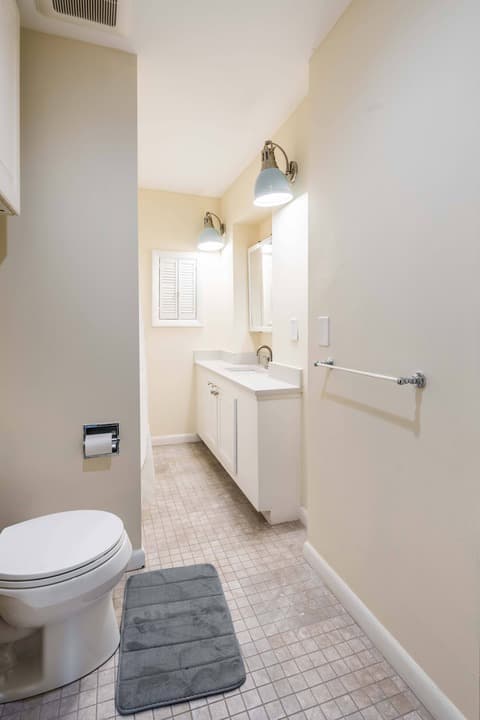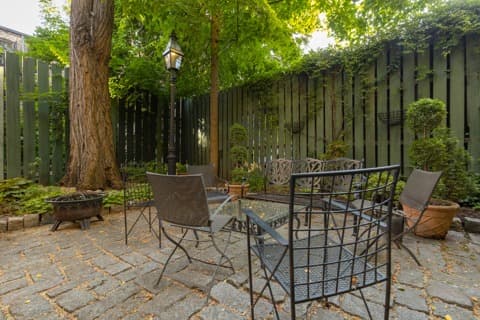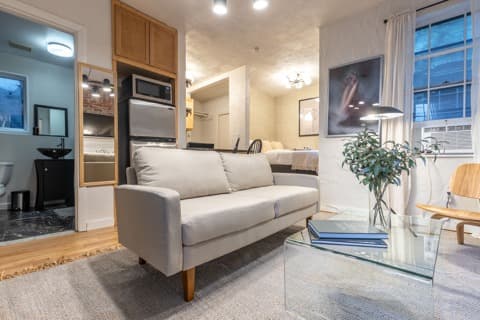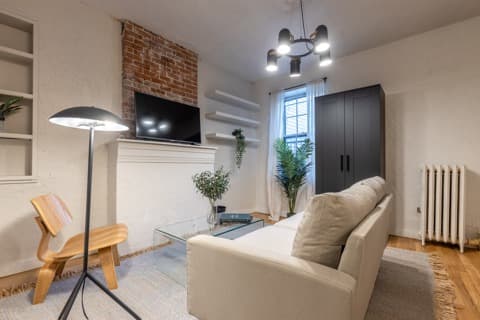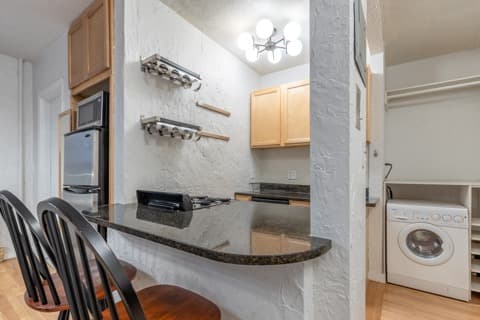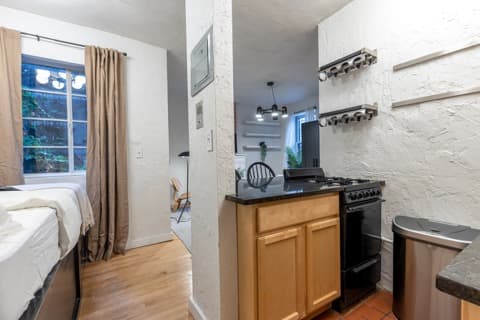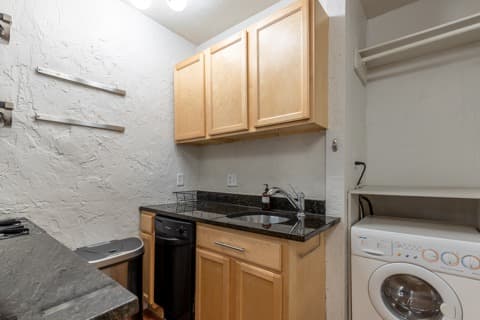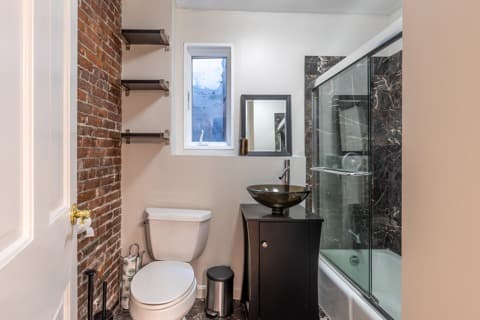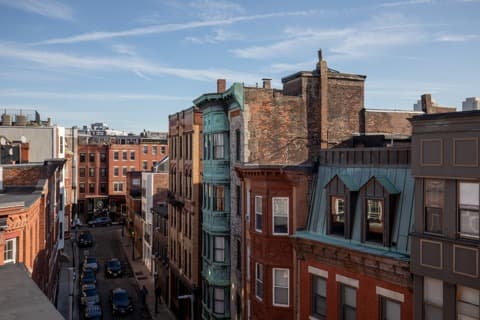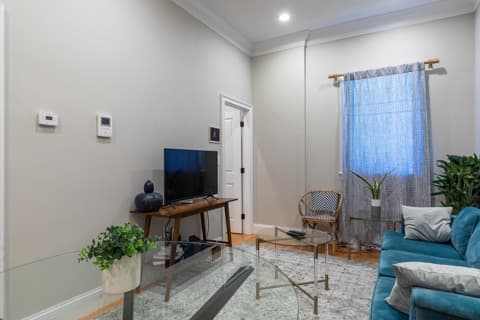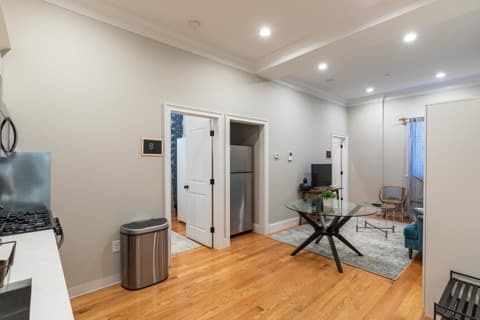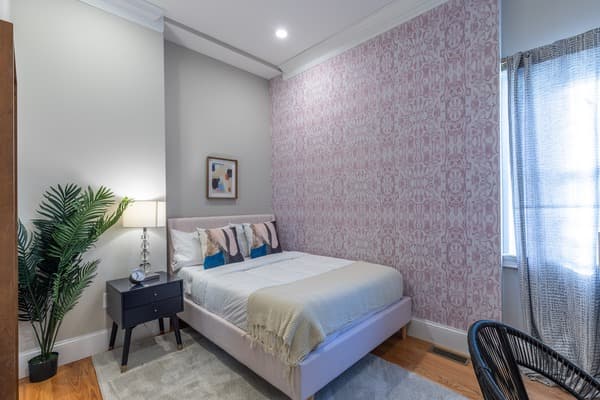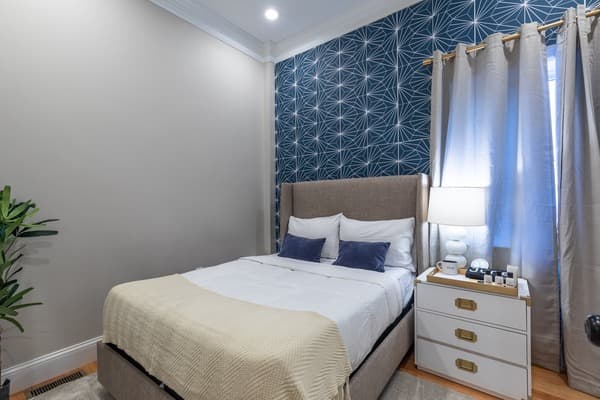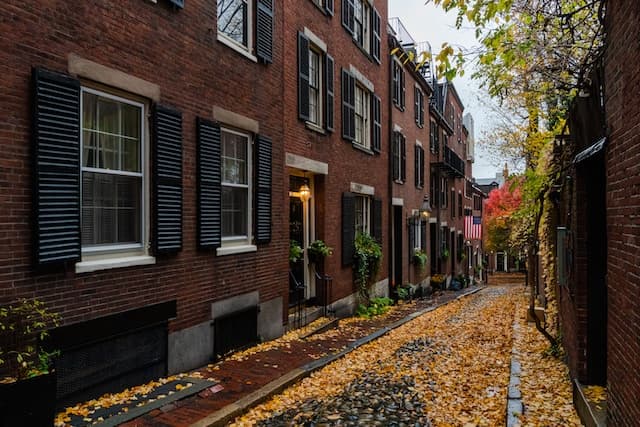5 Furnished and unfurnished apartments for rent in Downtown, Boston: Browse and book your perfect home today
Secure your perfect apartment in the best neighborhoods, with flexible 1-month+ leases. Apply today and move in tomorrow!
Want to book faster?
Get Pre-Approved and Book Instantly
Skip the line and get approved to instantly
book a home with June.
June Homes uses iDenfy and Plaid to provide a streamlined, quick, and secure way to verify your identity and income to calculate a range of homes you can instantly book.
The area that now constitutes Downtown Boston includes several notable sub-neighborhoods and districts, such as Chinatown, the Financial District, Government Center, and Waterfront. It is bound by the Boston Harbor to the east, South End to the south, Back Bay East and Beacon Hill to the west, and North End to the north. Outside of the new structures and modern features that you can see in Downtown Boston today, this historic area hasn’t changed all that much when it comes to street patterns, which date back to the 17th century. Buildings began lining the narrow streets around the Old State House, between Washington and Tremont, at the turn of the 19th century. By the mid-19th century, this once rural area had been transformed into a more commercial district. However, a massive conflagration in 1872, dubbed the Great Boston Fire, wiped out a substantial part of this city. The fire consumed approximately 65 acres of Downtown Boston, destroying over 700 buildings and most of the Financial District. Similar to the City of Chicago, which suffered from an equally devastating conflagration in 1871, the City of Boston began immediate reconstruction of the Financial District using some of the latest building supplies and methods available that aligned it more with its commercial nature. This rebuilding spurred a construction boom that brought about widespread updates to many properties in the Downtown Boston area.
Like other central business districts of major cities in the United States, Downtown Boston has seen numerous changes and undergone several transformations since the fire that nearly destroyed it. Over the past several decades, this neighborhood has witnessed the construction of new high-rise condos and mixed-use apartment buildings, as well as the renovation of historic “pre-fire” buildings from the 19th century. Despite this massive overhaul of Downtown Boston’s outward appearance, it is still a most historic neighborhood packed with exciting nightlife options and cultural attractions to keep you entertained. Downtown Boston today consists of various architectural styles like Art Deco and Brutalist, as seen in the numerous government buildings and skyscrapers that adorn this commercial neighborhood and add to its eclectic and intellectual feel. Much of the Victorian and Greek Revival architecture that was ushered in following the fire was well preserved and can be seen in some of the apartment buildings and row houses in Downtown Boston. If you are looking to do some shopping, you will want to be sure to check out the Downtown Crossing commercial district, which is dotted with department stores and high-end fashion retailers. Home to the Freedom Trail, a 2.5-mile path through Downtown Boston that passes 16 historic landmarks, this neighborhood is a walker’s paradise where everything is accessible on foot. Boston’s four MBTA subway lines meet Downtown, making this an ideal place to live for those that prefer to use public transportation.
Neighborhoods
- Allston
- Beacon Hill
- Brighton
- Brookline
- Central Square (Cambridge)
- Dorchester Center
- Dorchester - Fields Corner West
- Downtown
- East Boston
- East Cambridge
- Fenway
- Fort Hill
- Harvard Square (Cambridge)
- Inman Square
- Jamaica Plain
- JFK/UMass
- Medford
- Mission Hill
- Newton Corner
- North Cambridge
- North End
- Polish Triangle
- Roxbury
- Savin Hill
- Somerville
- South Boston
- South End
- Wellington-Harrington (Cambridge)
Apartments and Rooms for Rent
Rent Nearby Boston Universities
- Harvard University
- Massachusetts Institute of Technology (MIT)
- Boston University
- Northeastern University
- Tufts University
- Boston College
- Berklee College of Music
- Brandeis University
- Bentley University
- Emerson College
- Simmons University
- Suffolk University
- Lesley University
- University of Massachusetts Boston
- New England Conservatory of Music
- Babson College
- Bunker Hill Community College
- Massachusetts College of Art and Design
- Massachusetts College of Pharmacy and Health Sciences
- Wentworth Institute of Technology
Rent Nearby Boston Hospitals
- Massachusetts General Hospital
- Brigham and Women's Hospital
- Boston Children's Hospital
- Dana-Farber Cancer Institute
- Beth Israel Deaconess Medical Center
- Tufts Medical Center
- Boston Medical Center
- New England Baptist Hospital
- Spaulding Rehabilitation Hospital Boston
- McLean Hospital
- Mount Auburn Hospital
- St. Elizabeth's Medical Center
- Newton-Wellesley Hospital
- Massachusetts Eye and Ear
- Cambridge Health Alliance - Cambridge Hospital
- MelroseWakefield Healthcare
- Arbour Hospital
- Franciscan Children's
- Carney Hospital
- Lemuel Shattuck Hospital

